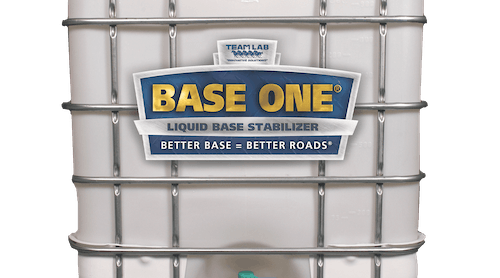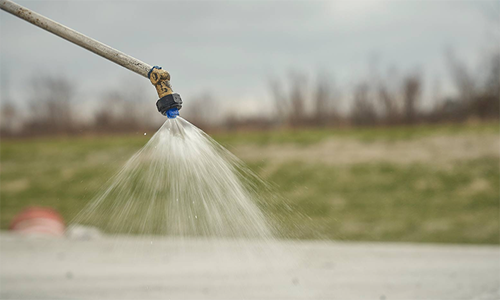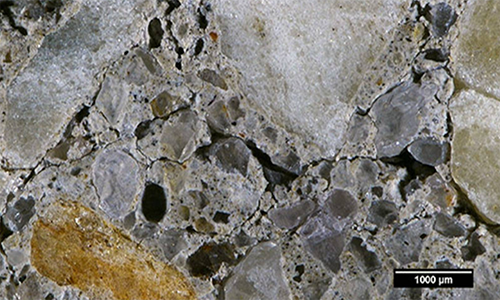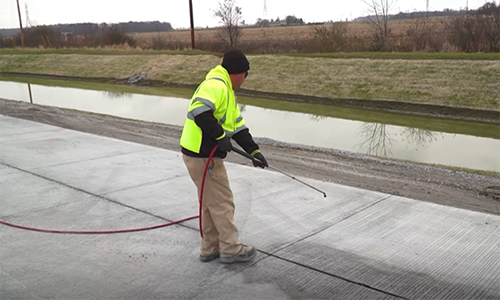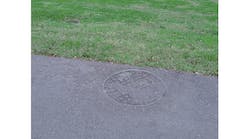Andrew Mollenbeck, Contributing Author
Asphalt is America’s most recycled product. At least according to the National Asphalt Pavement Association (NAPA). In a recent survey, it showed that 95% of reclaimed asphalt pavement (RAP) is reused in new pavement. Less than 1% winds up at a landfill.
The percentage of RAP in mixtures also continues to rise (almost 21% in 2021). The reduction in greenhouse gas emissions ‑ 2.6 million metric tons worth - was equivalent to removing 570,000 passenger vehicles from the road.
The industry’s ability to remake itself was part of the pitch to then-President-elect Joe Biden’s transition team in late 2020, as the framework was already being laid out for an infrastructure during the new administration. And the innovations extend well beyond recycling product.
Asphalt paves 94% of the country’s roads and bridges, and innovations within the industry, such as RAP and use of greener materials, make it increasingly agreeable with efforts to care for the environment. Now, federal agencies are employing financial incentives to give the progress an added boost.
“With this opportunity to incentivize some of these efforts and with some of the technologies in assessing cracking performance of mixtures coming on, it really creates a nice nexus of opportunity for these innovations to take root and people to use them,” said Richard Willis, vice president of engineering, research, and technology at NAPA.
The Infrastructure Investment and Jobs Act and the Inflation Reduction Act included victories for the asphalt pavement industry and offered incentives to use greener materials.
Industry leaders have already been making remarkable scientific advancements on their own, but they may be uniquely positioned to benefit from a changing landscape.
“It is a massive shift,” said Austin Hohmann, product manager at Colorbiotics in Ames, Iowa, which has already developed a hot mix capable of using up to 50% RAP.
Hohmann sees a different playing field in the government’s plan to favor greener materials, an area where Colorbiotics is already pushing the envelope.
“The conversation shifts from cost effectiveness to performance,” Hohmann said. “One of the biggest things you have to compete with is cost. Well, if it’s no longer about cost as much and more about meeting emissions, that’s one last thing that you have to worry about. That’s drastic. That’s massive.”
Willis agreed: “It’s almost a paradigm shift,” he said. “In the past it’s all been cost, cost, cost, and now we’re starting to try to figure out how we evaluate these [other criteria].”
Evaluations are getting more detailed and verifiable concerning the engineering, the environmental and the economic perspectives. Willis noted that the industry is acquiring the tools to make these assessments possible, such as analyzing the performance of products through balanced mix design programs and NAPA’s Environmental Product Declaration (EPD) tool to quantify the environmental impact of an asphalt mix.
Last year, the EPA announced it would begin a “buy clean” policy for federal aid projects. The agency was charged with developing a labeling system for low carbon construction materials, with the General Services Administration and the Federal Highway Administration being allocated funds to help offset costs.
In many cases, the scientific development on cleaner products is already set to go. The wait is for projects employing them to get a green light.
One of the hurdles in the past has been how to appropriately classify and measure the success or failure of new technologies, Hohmann said. But that is now a focus with bio-based rejuvenators and topicals, and the National Road Research Alliance project with the Minnesota Department of Transportation has been pursuing this data.
New classifications in the industry might be taking shape. Last year, in response to the infrastructure law, the federal government took a foray into trying to encourage the asphalt industry to use greener materials.
The GSA identified land ports of entry for rebuilding and reconstruction. As part of that, the GSA implemented what it called an Environmentally Preferred Asphalt standard. To qualify as a contractor, applicants had to be able to quantify the environmental impact of the mix and check a few boxes, and one of those boxes could be using more than 20% RAP in the mix.
In January of 2023, The Environmental Protection Agency released its determination of what a low-carbon materials are, which will again help identify who secures the work.
However, the wrinkle is that the federal law opened more than state departments of transportation. Cities could also get in on the funding and pass the incentives on to contractors doing smaller-scale projects. That provides additional opportunities for project managers and contractors to push the envelope.
High performance and use of greener materials are the norm, and innovators in asphalt will find increasing opportunities as civic leaders set priorities for future projects.


